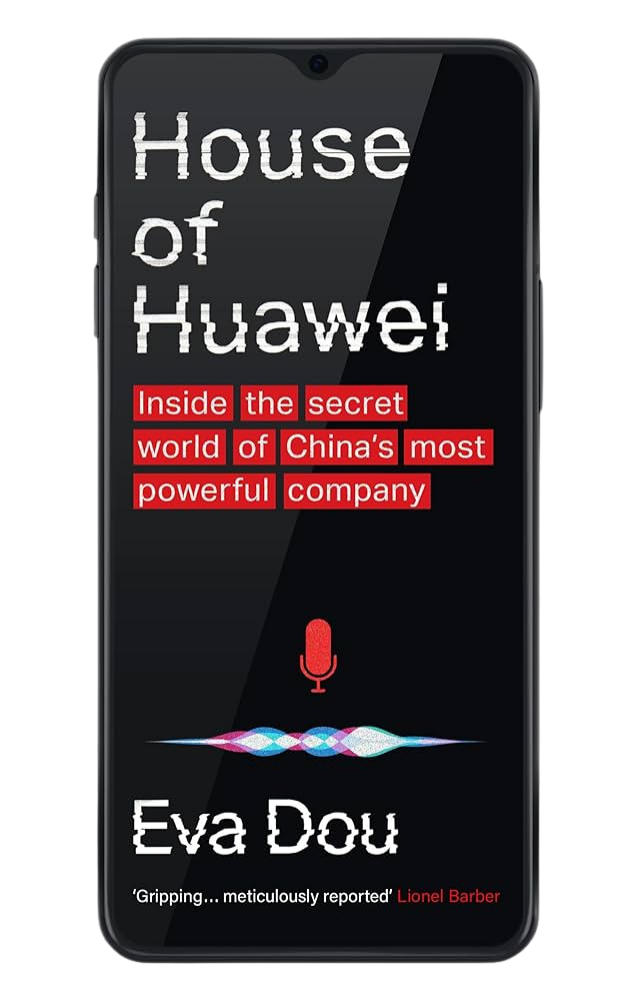House of Huawei
Eva Dou (2025)
Synopsis
This book tells the inside story of Huawei, the Chinese tech giant that became a proxy for growing Western anxieties about the country’s desire to dominate critical technologies. Through dogged reporting and rare access, Eva Dou charts the company’s journey from a scrappy telecom supplier to a strategic player at the heart of global geopolitics and the centre of a tech cold war.
It’s a story about the architecture of influence—how corporate strategy, national pride, and state power intertwine.
Why I picked it up
I wanted to understand Huawei beyond the headlines. Not just the sanctions, or the drama around 5G, or the arrest of Meng Wanzhou, but the deeper forces at play. What made Huawei different, and what does it reveal about how China builds, protects, and exports power? As the Wall Street Journal’s lead China tech reporter, Dou had rare access to Huawei insiders and years of frontline context, making her the ideal person to answer that.
Why it stuck with me
Huawei thrived in ambiguity—between the state and the market, between global norms and local realities. It mastered the use of complexity as camouflage, and in doing so, it exposed a blind spot in how Western firms think about risk: we’re not always good at seeing things that don’t play by our rules.
This book isn’t just about a company. It’s about what happens when a system of incentives, relationships, and national strategy coheres into something that looks like a firm, but behaves like something else entirely.
Through the lens of Modern Risk
For risk professionals, House of Huawei lands hard:
Geopolitical risk is supply chain risk. If your infrastructure—cloud, devices, comms—is entangled with firms like Huawei, you’re exposed. Not just to operational disruption, but to reputational, legal, and compliance risk.
The boundary between public and private is collapsing. In China (and increasingly elsewhere), private companies often act in alignment with state interests, whether by choice or necessity. That changes how we assess counterparty risk, due diligence, and even M&A exposure.
Resilience means more than redundancy. Dependency on opaque or state-aligned vendors weakens contingency planning and invites regulatory scrutiny. Boards and risk leaders should be asking: Who are we dependent on, and what assumptions are we making about their intentions, incentives, and allegiances?
Worth questioning
One of the quiet tensions in the book is Western complacency. Huawei didn’t rise in secret. Its pricing model, its hiring practices, its relationships with state entities—these were visible for years. But they were ignored, downplayed, or misunderstood until the geopolitical temperature rose.
How many other risks are hiding in plain sight because they don’t fit our frameworks? How many suppliers, investors, or partners operate with incentives and constraints we don’t fully grasp?
For readers who enjoyed…
The Chip War by Chris Miller
The Smartest Guys in the Room by Bethany McLean and Peter Elkind
AI Superpowers by Kai-Fu Lee
Let’s Talk About It
What concrete steps—if any—have you taken to assess or reduce exposure to politically sensitive suppliers or jurisdictions? Have you made any changes to vendor onboarding, risk assessment, or tech procurement in response to these shifts?


